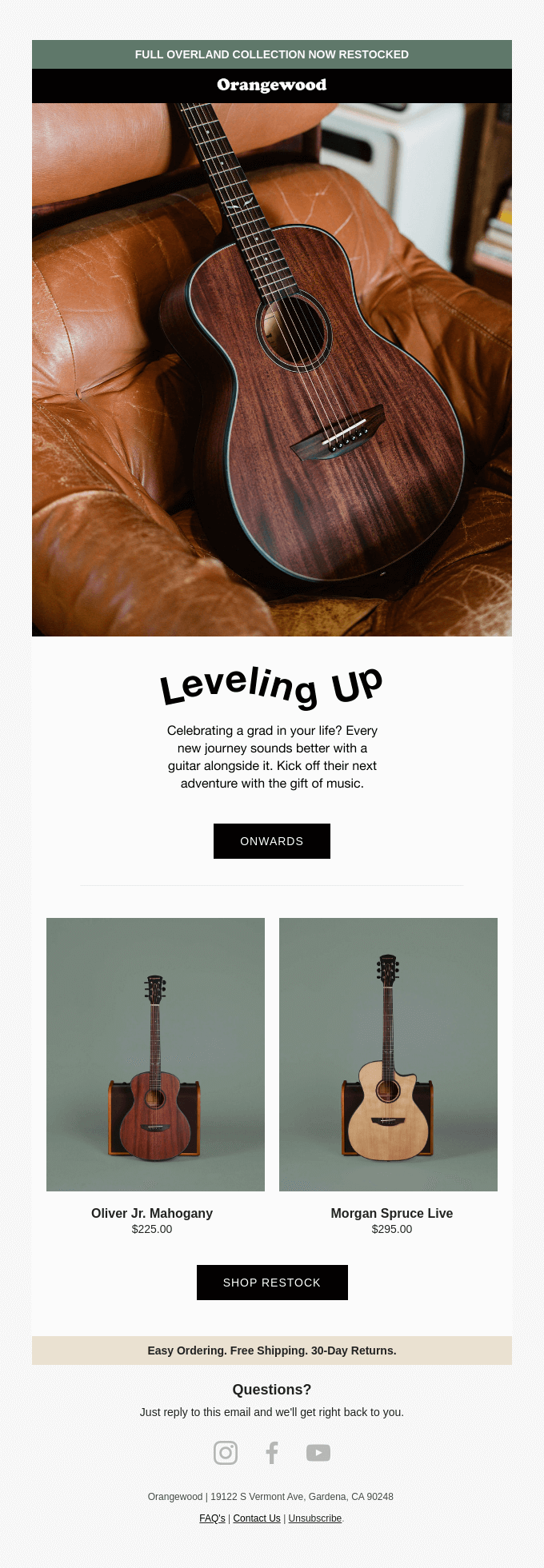[This post was originally published on 23rd Nov 2020. It has been updated on 3rd June 2022]
Products going out-of-stock is an inevitability in an e-commerce business. And sometimes due to reasons beyond a business owner’s control. Be that as it may, not being able to lay hands on a product they desire can create a frustrating so-near-yet-so-far effect for your customers. Not only can your customers turn to a competitor to make a purchase but also the disappointment of not being able to buy the desired product can erode their sense of satisfaction. As a result, they may start viewing your business less favorably. This puts your revenue as well as your base of returning customers at risk.
However, back-in-stock emails present your marketing team with an unmatched opportunity to build positive interactions out of this not-so-pleasant customer experience. When done right, these can help recover revenue losses, drive engagement, and deliver on delightful customer experience.
The Effectiveness of Back-in-Stock Emails
According to a report, retailers (including online players) stand to miss out on up to $1 trillion in sales owing to products being out of stock. Back-in-stock email alerts are a great tool to close in on the gap by targeting shoppers who have expressed interest in out-of-stock items.
You can use data on customer activity on your website or shopping app to track which out-of-stock items they have browsed or wishlisted, and then, trigger automated emails to inform them of the product having been restocked.
This generates a sense of satisfaction in not missing out on an item they needed or desired as well as reassures your buyers that your business cares about their needs.
The effectiveness of back-in-stock emails can be gauged from the fact that they record an open rate of 65.32%, according to a study, performing the best among different types of email campaigns. Not just open rates, these email alerts also drive a conversion rate of 18.04%, according to another email benchmarks analysis, which is just short of the 20.39% achieved by cart abandonment emails. At $1.43, back-in-stock emails also deliver the highest revenue per email.
However, to be able to meet these benchmarks, your back-in-stock email campaigns must have the following features:
- Reassurance: Why wait to engage with your customers until a product is restocked? You can create hope by sending them an email reassuring them that the item they’re interested in will be available soon. This can prevent them from drifting to your competitors as well as presents an opportunity to get them to sign up for your email list.
- Timeliness: Back-in-stock alerts need to be timed well for them to be effective. To ensure that you need to define a timeframe within which to send these emails. For example, sending these emails to people who have browsed the product in the last month can be more effective than targeting those who showed interest in it six months back.
- Pointedness: To make sure your back-in-stock emails are opened, you need to make the messaging pointed. That’s why indicating the purpose of the email in the subject line is imperative.
- Engagement: To drive engagement, the restocked product should be the highlight of your email message. But that doesn’t mean you can’t use the opportunity to squeeze in other relevant product recommendations.
7 Examples of Really Good Back-in-Stock Emails
Based on these features, let’s take a closer look at how you can create back-in-stock emails that hit the nail on its head every single time. Here are some examples you can draw inspiration from:
1. Offer Reassurance
This email from Public Rec creates reassurance and hope by telling buyers that they’d be intimated once the product is back in stock. They’ve also smartly plugged in their Instagram handle in the email, seeking more followers.
2. Incentivize

This back-in-stock email is making a direct, clean announcement about a product being available again. They’ve also thrown a small incentive of free shipping over $100 and 60-day returns in the mix as a push to get potential buyers to go through with the purchase
3. Personalized Messaging

United By Blue has nailed the personalization element in this back-in-stock email. The tonality of the content makes it feels as if the brand is talking directly and exclusively to the recipient. By leveraging the right data insights from your CRM, you too can automate such customized emails that target the right segment of the audience.
4. Creating a Narrative

This email from Snowe taps into the good old story-telling techniques to build an engaging narrative. The images, use of soft blue hues, coupled with crisp content, make the products feel instantly aspirational, stirring in the recipient a desire to own them now that they’re available again.
5. Create Urgency

This UGG email creates a sense of urgency by announcing the availability of an out-of-stock product and adding a rider that it may sell out again soon. This sense of urgency can motivate a recipient to complete the purchase before the product flies off the shelves again. They’ve also added a giveaway and reward points to incentivize the sale.
6. Cross-sell

In this back-in-stock email, Orangewood Guitars is not only playing up the hype of an already popular product but also smartly squeezing other relevant product recommendations that are likely to strike a chord (see what we did there?) with potential buyers. It’s a great way to cross-sell or at the very least draw attention to your other offerings.
7. Play it Up

Everlane is really playing up their Chino Shorts in this back-in-stock email by highlighting its various USPs, making them even more desirable to customers who’ve already expressed interest in the product. They’ve also included customer reviews in the email to help the recipient make a decision to purchase without exiting the email.
Wrapping It Up
You may not be able to prevent products from going out of stock but you can definitely make sure that when it happens, it doesn’t eat into your revenues and customer base. All you need to do is craft some strategically designed and timed back-in-stock emails!





Kevin George
Latest posts by Kevin George (see all)
Expert Interview Series: Part 6
Education Industry Email Automation: It’s not as difficult as you think